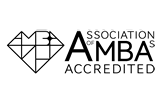Developing Market Presence
Brief Description
The main aim of this unit is to introduce the basic concepts of marketing, their interrelationships and their role in the organizational context. Students will become familiar with the main ideas and marketing concepts, including market research, product development, pricing, promotional and distribution strategies. Marketing activities apparently have not changed. The environment however where marketing is practiced has changed considerably in the past two decades. Fierce competition, very short product life cycles, global markets, internet and its applications, create a very challenging environment for today's enterprises, where marketing has become indispensable.
Topics Addressed
- Marketing in a changing world.
- The marketing environment.
- New trends in marketing segmentation, targeting and positioning.
- New concepts in consumer buying behavior.
- Marketing’s role in product & service development.
- Services marketing and the service experience.
- Strategies and determination of price.
- Integrated marketing communications.
- Promotion management.
- Product placement - The strategic new trend.
Expected outcomes
- Critically handle a number of tools available to marketing managers.
- Successfully implement the concepts that are involved in producing an effective marketing effort.
- Analyze real life situations and provide solutions they may encounter.
- Critically analyze, evaluate and use student’s own reasoning.
- Synthesize the forces affecting the environment of a firm.
- Critically assess factors affecting marketing decisions.
New Product and Service Development
Brief Description
More than ever before, new products and services have become an absolute necessity for every company. Developing and launching new products and services successfully can result in growth and provide – in many cases - a competitive advantage which will lead the company ahead of its competition. Given that a significant number of new products will fail – many of them will not even reach into the market – understanding in depth and being able to apply the theoretical framework of developing products and services, becomes a critical competence for all marketers. This module studies the theory and the practice of developing and launching new products and services. Particular emphasis will be given on planning of a new product/service from idea generation to the launching. Fundamental concepts will be analyzed and real life cases will be discussed thoroughly in an attempt to link research findings and theories with application. Students will be exposed to the strategic approaches of developing products, the identification of the various opportunities, the concept generation alternatives, as well as in testing, development, launching and all other aspects of introducing new products to the market place. However, this module provides the managerial approach to acquaint students with the necessary steps and processes involved in product development which can be applied to products and services as well as to consumer and industrial products.
Topics Addressed
- Introduction to innovation and new product development.
- The new product development process.
- Opportunity identification and selection: Strategic planning for new products.
- Concept generation and problem based ideation: Finding and solving customer problems.
- Developing services.
- Analytical attribute approaches: Introduction to perceptual mapping and trade-off analysis.
- The concept evaluation system.
- Concept testing.
- Sales forecasting and financial analysis.
- Product protocol.
- Product use testing and development.
- Strategic launch planning.
Expected outcomes
- Understand and apply the process of new product development and management.
- Appreciate the role of multiple functions in the process of developing new products (. research, design, marketing, production, finance).
- Learn how to integrate the end-consumers into the process of NPD.
- Apply processes to identify opportunities for new products and services.
- Develop and apply various testing tools used for evaluating product concepts.
- Enhance your teamwork skills.
Strategic Brand Management
Brief Description
This unit addresses issues that relate to the importance of brands, what they represent to consumers and alternative strategies that can be implemented by companies to manage them properly. Although brands may represent invaluable intangible assets, creating and nurturing a strong brand poses considerable challenges. The concept of brand equity can provide students a valuable perspective and a common denominator to interpret the potential effects and tradeoffs of various strategies and tactics for their brands. Strategic brand management involves the design and implementation of marketing programs and activities to build measure and manage brand equity. The three major questions addressed in this unit are: How can brand equity be created? How can brand equity be measured? How can brand equity be used to expand business opportunities?
Topics Addressed
- Building world class brands.
- Growing and sustaining brand equity.
- Branding strategy.
- Building powerful brands online.
- Latest trends in digital and mobile marketing.
- What makes content go viral online?
- Saving your brand in the face of crisis.
- Measuring and interpreting brand performance.
- Using market research insight to inform brand strategy.
Expected outcomes
- Evaluate the role of brands, the concept of brand equity and advantages of creating strong brands.
- Appraise the different approaches to measure brand equity and how to implement a brand equity measurement system.
- Evaluate alternative branding strategies as well as devise brand hierarchies and brand portfolios.
- Evaluate the role of corporate brands, family brands, individual brands and brand modifiers, and how they can be combined into sub-brands.
- Manage brand equity, taking a broader “multiple product, multiple brand”, on-line and off line perspective as well as a longer term multiple market perspective to brands.
- Assess the implications and applications of the customer based brand equity framework.
Business Economics
Brief Description
Business economics is the study of the everyday decisions consumers and businesses make and the implications of these decisions. The aim of this module is to equip students with the basic knowledge of business economics and to examine the ways in which economic theory may be applied to understand and solve real world business problems. A detailed approach will be adopted to explore the Microeconomic and the Macroeconomic conditions that affect business activity, especially on the South Eastern European environment, as well as a deeper understanding of the sectoral structure and the world economic environment.
Topics Addressed
- Introduction to the business environment.
- Consumer theory.
- Firm theory.
- Markets in equilibrium (Demand and Supply).
- Market structures.
- Compete or cooperate?
- The role of the government.
- Management of the macroeconomic environment.
- The European economic environment.
- Macroeconomic case study on country-specific and global-specific issues.
Expected outcomes
- Understand the main driving forces of a business environment, and what brings long-term changes and equilibrium.
- Understand the way markets operate through the concepts of demand and supply.
- Consider the range of competition strategies, advertising and pricing policies existing within the business environment.
- Understand the instrumental role that macroeconomic factors such as economic growth, unemployment, inflation, play in conditioning business activity.
- Appreciate the dynamics of European Monetary Union and its impact on South East European economies.
- Assess economic developments and penetrate into traditional business models in South East Europe.
Financial Reporting and Management Accounting
Brief Description
Management accounting serves the multiple information needs of managers. It consists of accounting techniques and procedures for gathering and reporting financial, production, and distribution data to meet management's information needs. Management accountants are now facing a great challenge, as globalization and automation are the key characteristics of the new business environment. The management in general and management accountants in particular, need to obtain information about these changes, interpret it and use it in their decision-making in order to remain competitive.
Topics Addressed
- Introduction to accounting.
- Overview of financial statements.
- Introduction to management accounting: Cost terms and concepts.
- Video Presentation: The balance sheet barrier and how to read a complete financial annual report in all its aspects.
- Cost volume profit analysis and relevant costs for decision making.
- Introduction to financial statement analysis - The financial performance of organisations through a detailed ratio analysis.
- Assignment of direct and indirect costs: Traditional costing of products.
- Product costing: Traditional and activity based costing methods and Activity based costing and customer profitability analysis.
- Recent developments in cost and management accounting.
- The role and nature of budgets & capital investment appraisal techniques.
Expected outcomes
- Calculate unit costs, applying cost accumulation methods and be able to explain their strengths and weaknesses.
- Identify and explain cost behavior patterns and apply cost-volume profit analysis.
- Prepare and present budgets for planning, control and evaluation.
- Compute and explain the variances between budgeted and actual data.
- Identify and use relevant costs in a range of decision-making situations.
- Apply techniques associated with a changing business environment such as TQM and ABC.
Corporate Finance and Management Accounting
Brief Description
This course examines the functions and the context of practical corporate financial management in the modern firm focusing on the significant developments in both theory and practice, discussing and analyzing the trends related to financial instruments and tools. The drivers, both external and internal, that shape corporate financial management are explored, and the managerial context is addressed. The course is designed to strengthen students’ theoretical knowledge on corporate finance aspects through rigorous application of theory to real world cases. The course will cover a wide area of issues in corporate finance such as valuation, investment and financing decisions process, capital budgeting decisions and risk management. Case studies from the professional practice of Corporate Financial Management along with professional material will allow a better understanding of the real life problems managers are facing today providing the necessary skills to overcome them.
Topics Addressed
- Introduction to managerial finance, its role and environment and basic quantitative aspects.
- Analysis of financial statements, development of ratios.
- Capital budgeting and investment decisions.
- Risk, Return and Investment choices.
- Corporate finance and fundamentals of risk management.
Expected outcomes
- Analyze financial statements to facilitate managerial decisions.
- Evaluate the importance of risk factors in making investment decisions.
- Interpret firm valuation and capital structure decisions.
- Develop knowledge related to financial and investment decisions of firms.
Understanding Organizational Behavior
Brief Description
This unit introduces the foundation concepts of organizational behavior (OB) and its role in today’s organizational systems. Students will become familiar with, and introduced to, the main ideas and principles underlying the everyday functioning of organizations and management. The unit draws upon understanding from a variety of different backgrounds (psychology, sociology, political science, history) to help students understand how to make organizations more effective through individual and group interactions.
Topics Addressed
- Group behavior-team building
- Stress and the individual
- Time management
- Organizational structure and design
- Communication
- Organizational culture
- Decision making
- Strategy execution and change.
Expected outcomes
- Understand current organizational behavior issues.
- Understand the need for an integrated theoretical and practical organizational behavior.
- Successfully exploit new opportunities.
- Critically assess key organizational behavior issues in relation to practical management issues.
- Understand the ideas, principles and practices of organizational behavior.
Leading and Managing People
Brief Description
The focus on human resources and their capabilities has never been more critical. Managing and leading people have become a critical success factor for organizations looking to become more effective. Since the mid-1990’s, organizations have been going through rapid and fundamental and continuous changes in the way they do business. These changes increased the level of complexity within both organizational and business environments. Whether one reviews these changes in terms of globalization, reengineering or downsizing, there is more and more evidence to suggest that focusing on how to lead and manage people be provide one of the keys to success. In this respect, this unit highlights the main ideas, principles and practices underlying day-to-day Leadership and change management within organizations. Special emphasis is given on the way that scientific insights from complexity science, behavioral science and neuroscience affect leadership behavior and can create a competitive advantage.
Topics Addressed
- Understanding the nature of leadership in organizations.
- Assessing leadership styles.
- Leadership & change management.
- Understanding change in organizations.
- Resistance to change.
- Motivating change in organizations.
- Understanding the impact of brain in human behavior.
- Current Issues in leadership & change management.
Expected outcomes
- Critically understand the new realities of leading, managing and change in organizations.
- Understand and familiarize with neuroscience and its effect on leadership.
- Understand and familiarize with behavioral science and its effect on leadership.
- Understand the ideas, principles and practices of change management.
- Critically assess leadership associated with the development of change programs.
- Understand the ethical issues associated with the leadership practice.
Business Strategy - The art of creating competitive advantage
Brief Description
Unlike other business units that concentrate narrowly on a particular function of business – accounting, finance, marketing, production, human resources, or information systems - strategic management is a course that integrates all these functions. It cuts across the whole spectrum of business and management. The centre of attention is the total enterprise – the industry and competitive environment in which it operates its long-term direction and strategy, its resources and competitive capabilities and its prospects for success. Throughout the unit, the question addressed is “What must managers do, and do well, to make the company a winner in the game of business?”. The answer that emerges, and which becomes the theme of the course, is that good strategy making and good strategy execution are the key ingredients of company success and the most reliable signs of good management. The mission of the unit is to explore why good strategic management leads to good business performance, to present the basic concepts and tools of strategic analysis, and to inculcate the methods of crafting a well-conceived strategy and executing it competently.
Topics Addressed
- Strategic Innovation for competitive advantage.
- Identifying and evaluating opportunities for growth.
- Resource analysis.
- Business strategies for growth and development.
- Corporate strategy.
- Strategic alliances for differentiation or cost advantage.
- Strategy implementation and change.
Expected outcomes
- Develop a critical understanding of how different processes of business strategy development may be more or less suitable in different industry settings.
- Develop an understanding of how to analyze the environment and identify opportunities.
- Develop a critical understanding of the importance of resources and the reasons why some strategies are more difficult to imitate than others in order to sustain competitive advantage.
- Develop a critical understanding of the strategies for global expansion including their associated application and their advantages/disadvantages.
- Develop an understanding of the need for innovation in modern organizations and how it is encouraged and implemented.
Operations Management and Supply Chain Management
Brief Description
The integration of Operations with Supply Chains has long been recognized as a core competitive strategy and business priority that would be instrumental in leveraging organizations of all sizes at a National, International and Global level. As organizations seek to continuously service customers faster, cheaper, and better, while generating minimal environmental impact, leaders and managers have come to the stark realization that the two disciplines cannot and should not work in isolation from each other but rather align themselves upstream and downstream in order to jointly reap the rewards. The existing experiences must be synthesized to create a managerial perspective of the core tasks and challenges required to effectively integrate Operations and Supply Chains in the future. Collectively, the two disciplines ultimately involve actors from every single function within organizations; procurement/contract managers, operations managers, logistics managers, marketing and sales personnel, human resources and finance professionals, distribution/warehousing, forecasts/inventory management and beyond. Therefore, the purpose of this module is to provide delegates with the essential fundamentals to understand the two disciplines in numerous industrial settings, and consequently integrate them while focusing in the latest developments and tools available: Advanced Analytics and Big Data, Internet of Things, Aviation and Drones, Artificial Intelligence and Robotics, Additive Manufacturing (3D Printing), System and Process Improvement and more.
Topics Addressed
- Logistics/Supply chain strategy and planning.
- Logistics/Supply chain product and customer service.
- Order processing and information systems.
- Inventory policy decisions and demand.
- Transport fundamentals.
- Supply chain coordination.
- Warehousing fundamentals.
- Purchasing and procurement.
- Trends and developments in Logistics & SCM.
Expected outcomes
- Demonstrate a critical understanding of the role of Operations management within Organizations.
- Demonstrate a critical understanding of the role of Supply Chain Management and Global Logistics.
- Evaluate the impact of Operations, Supply Chains and Logistics to organizations around the globe and in different industrial settings.
- Demonstrate a critical understanding of Systems/Process management as well as Forecasting and Inventory management.
- Understand the role of the Internet of Things and Big Data in the Operations, Supply Chains and Logistics.
Information and Big Data Management
Brief Description
Everyday, we create 2.5 quintillion bytes of data– so much that 90% of the data in the world today has been created in the last two years alone. Big Data is defined as techniques and technologies, which make capturing value from data at extreme scale economical. Big Data is high-volume, high-velocity and high-variety (3Vs) information assets that demand cost-effective, innovative forms of information processing for enhanced insight and decision-making. One example of big data analytics is Machine Learning, a specific subset of AI that trains a machine how to learn, makes it possible to quickly and automatically produce models that can analyze bigger, more complex data and deliver faster, more accurate results, even on a very large scale. A wider application of big data analytics is within the area known as Industry 4.0. This involves automation and data exchange, primarily in production technologies, using cyber-physical systems, the Internet of things, cloud computing and cognitive computing. Industry 4.0 does not start and end with supply chain or production. Its reach could be much broader, affecting every industry and sector, even society itself.
Topics Addressed
- Information Management: Issues and challenges.
- Major business initiatives: Gaining competitive advantage with IT.
- Managing data for decision support - Improving business performance.
- Enterprise resource planning (ERP) systems.
- Customer relationship management.
- Infrastructure, cloud computing, metrics, and business continuity planning: Building and sustaining the dynamic enterprise.
- Protecting people and information: Threats and safeguards.
- Analytics, decision support, and artificial intelligence: Brainpower for your business/ Business intelligence.
- Emerging trends and technologies: Business, people, and technology tomorrow.
- Big Data.
Expected outcomes
- Recognize the role of Information Management and Information Systems in the evolving strategic business environment.
- Appreciate the importance of developing effective Information Management Systems to achieve performance and competitive advantage in the e-business and digital economy era.
- Critically approach networked and global Information Systems such as ERP, CRM, and Data warehousing as tools to facilitate innovation.
- Relate new pervasive technologies (e.g., mobile computing, communications), and other multimedia developments to facilitate strategic management decision making.
- Identify opportunities for new organizational structures, roles and job descriptions with the use of Information and some ethical and societal impacts.








